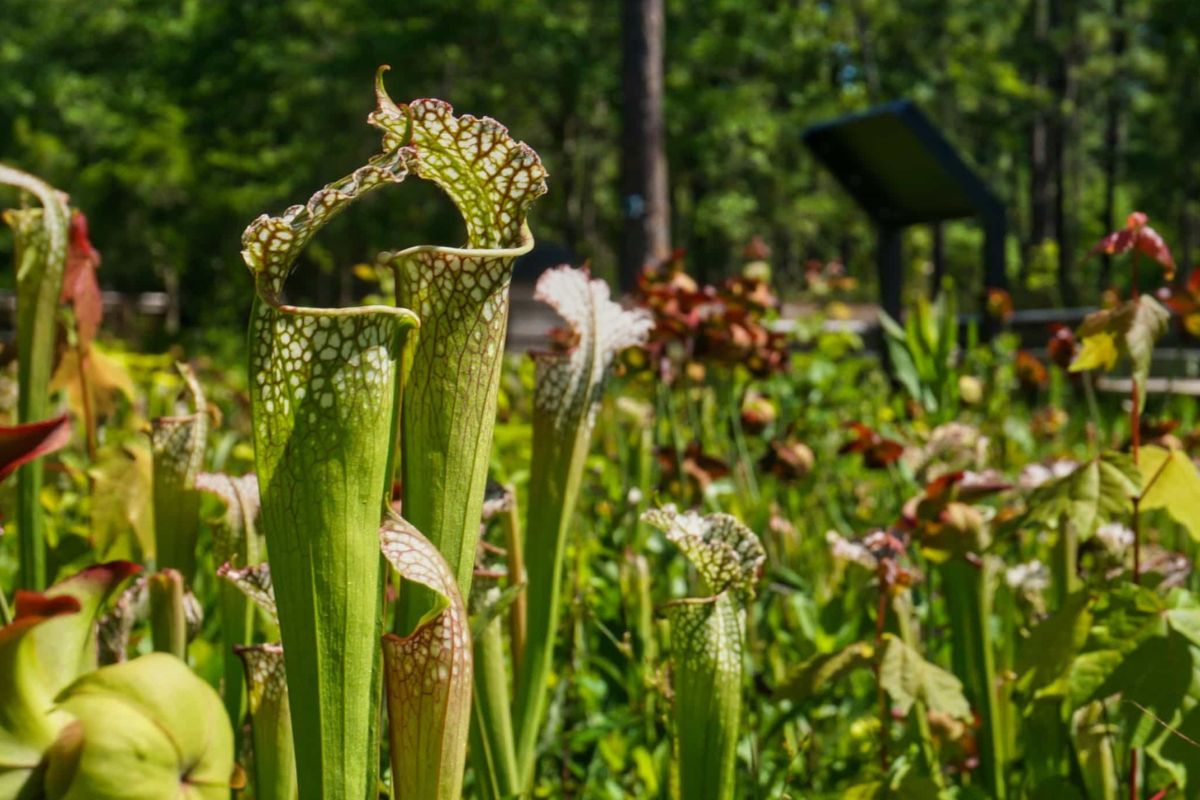Secret Carnivorous Plant Bogs Of The Carolinas

Have you ever heard of the secret carnivorous plant bogs of the Carolinas? These hidden gems are home to some of the most fascinating plants on Earth. Imagine walking through a lush, green landscape where plants like the Venus flytrap, pitcher plants, and sundews thrive. These unique plants have adapted to their nutrient-poor environments by developing ways to trap and digest insects. Visiting these bogs offers a rare glimpse into a world where plants take on a more active role in their survival. Whether you're a nature lover or just curious, the carnivorous plant bogs of the Carolinas are a must-see.
Hidden Wonders of the Carolinas
The Carolinas are home to some of the most unique and fascinating ecosystems in the world. Among these are the secret carnivorous plant bogs, where plants have adapted to capture and digest insects. These bogs are not only a botanical wonder but also a testament to nature's ingenuity.
Why Carnivorous Plants Thrive Here
The bogs of the Carolinas provide the perfect conditions for carnivorous plants to thrive. The acidic, nutrient-poor soil forces these plants to find alternative ways to get the nutrients they need. This has led to the evolution of some truly remarkable species.
Must-Visit Carnivorous Plant Bogs
If you're intrigued by these fascinating plants, here are some must-visit bogs in the Carolinas where you can see them in their natural habitat.
Green Swamp Preserve, North Carolina
- Home to the famous Venus Flytrap, this preserve offers a glimpse into the world of carnivorous plants. The Venus Flytrap is native only to this region, making it a must-see for plant enthusiasts.
Carolina Beach State Park, North Carolina
- This park features a variety of carnivorous plants, including pitcher plants and sundews. The Flytrap Trail is a popular spot where you can observe these plants up close.
Holly Shelter Game Land, North Carolina
- A lesser-known gem, this game land is home to a diverse array of carnivorous plants. It's a great spot for those looking to explore off the beaten path.
Francis Marion National Forest, South Carolina
- This forest is home to several species of pitcher plants. The unique landscape provides a perfect backdrop for these fascinating plants.
Lewis Ocean Bay Heritage Preserve, South Carolina
- Known for its diverse plant life, this preserve is a great place to see sundews and other carnivorous plants. The preserve's wetlands create an ideal environment for these species.
Tips for Visiting Carnivorous Plant Bogs
Exploring these bogs can be an unforgettable experience. Here are some tips to make the most of your visit:
- Wear appropriate footwear: Bogs can be wet and muddy, so waterproof boots are a good idea.
- Bring a camera: These plants are incredibly photogenic, and you'll want to capture their unique beauty.
- Respect the environment: Carnivorous plants are often fragile and can be easily damaged. Be mindful of where you step and avoid disturbing the plants.
The Science Behind Carnivorous Plants
Carnivorous plants have evolved to capture and digest insects as a way to supplement the poor nutrient content of their soil. They use a variety of mechanisms to trap their prey, from sticky surfaces to snap traps. Understanding the science behind these adaptations can make your visit even more fascinating.
Conservation Efforts
Many of these unique ecosystems are under threat from development and climate change. Conservation efforts are crucial to preserving these habitats and the incredible plants that call them home. Supporting local conservation organizations can help ensure that these bogs remain for future generations to enjoy.
Final Thoughts
The secret carnivorous plant bogs of the Carolinas offer a unique glimpse into the wonders of nature. Whether you're a seasoned botanist or just curious about these fascinating plants, visiting these bogs is an experience you won't forget.
Discover the Magic of Carnivorous Plant Bogs
Carnivorous plant bogs in the Carolinas offer a unique glimpse into nature's wonders. These bogs, home to fascinating plants like Venus flytraps and pitcher plants, showcase the region's rich biodiversity. Visiting these spots provides an unforgettable experience, blending education with adventure.
Exploring these bogs helps support conservation efforts. Many of these plants are endangered, and your visit can raise awareness about their importance. Remember to respect the environment by following guidelines and not disturbing the plants.
Plan your trip to these hidden gems. Whether you're a nature enthusiast or just curious, the carnivorous plant bogs of the Carolinas promise a memorable journey. Pack your camera, wear comfortable shoes, and get ready to be amazed by these natural wonders.

